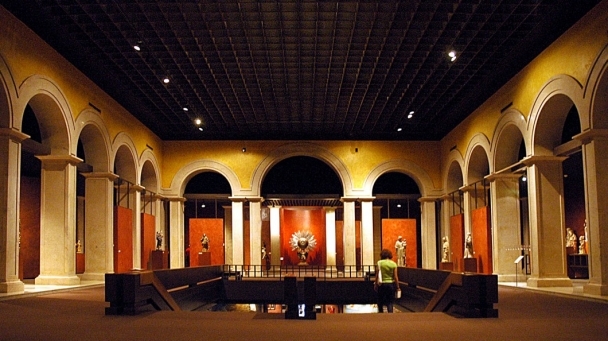
The National Coach Museum brings together a unique collection of ceremonial vehicles and rides comprehended between the sixteenth and nineteenth centuries, mostly from the Royal Portuguese Household to which were added vehicles of churches and other individuals. In the new building, about 70 vehicles are on display to the public, the oldest of which dates back to the sixteenth century and the most recent to the nineteenth century.
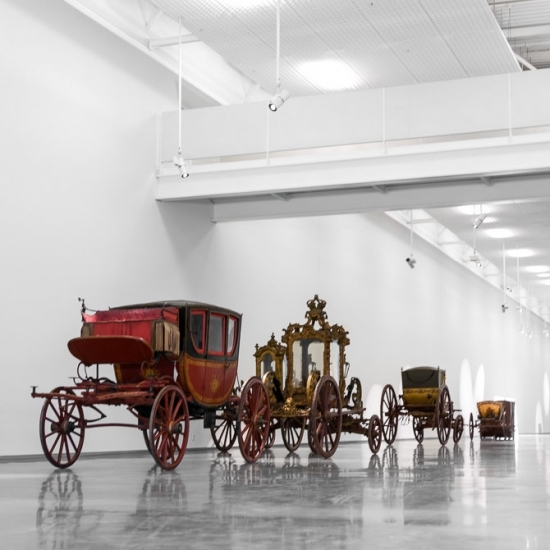
The collection
Here, the vehicles on display allow visitors to understand the technical and artistic evolution of animal-powered transport means used by the European courts until the advent of the automobile. In addition to vehicles, the museum also has a collection of parts that were used in the maintenance of the cars and in gala processions, as well as a few others related to the cavalry. There's also a collection of portraits of the Royal Family.
The new Coach Museum
The new Coach Museum is located in Belém. This was a much-needed change of venue due to the museum's increasing collection as well as to the need of creating a space devoted to the maintenance and repairment of the vehicles. The most visited museum in the country now has two exhibition rooms, both for the permanent and the temporary collections. Adding to these rooms, a library, an archive, an auditorium, and a shop were also created.
Address: Afonso de Albuquerque Square 1300-004 Lisboa
Phone: (+351) 21 073 2319
Time: Tuesday to Sunday 10 am - 6 pm. Last entrance 5h15 pm (Coach Museum) and 5:30 pm (Royal Riding Arena).
Closed on Monday, January 1st, May 1st, Easter Sunday, 24th and 25th December.
Few things are as Portuguese as azulejo (ceramic tiles) art. These fascinating pieces of ceramic tell incredible stories in a puzzle-like manner. The Museu Nacional do Azulejo (National Tile Museum) was built as a home to many of these stories in 1965. It tells the history of this art form in a magnificent sixteenth century convent. It is one of the most visited museums in Lisbon.
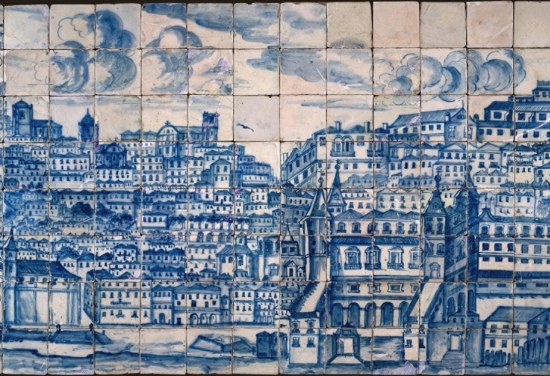
The Museum
This museum is unique worldwide, as no other country is as devoted to this art as much as Portugal. Interestingly, the production of tiles originated in Egypt, and then spread to the rest of Africa and Europe. In Portugal, the tile golden age only lasted a few years. However, it testifies the Portuguese economic power at the time. The tiles were used to decorate altars, served as city maps and as indicators of the power of a family. These were also an excellet means for social satire.
The collection at the National Tile Museum covers the production of tiles from the second half of the 15th century to the present days. In addition to tiles, this show also includes ceramics, porcelain and faience illustrating the materials and manufacturing techniques.
Among the exhibited works is the colourful “Nossa Senhora da Vida†from 1580, which represents the birth of Christ, “A Lição de Dança†from 1707, “Retrato de Senhora†from the early 19th century and “O Casamento da Galinha†from 1665.
Address: Rua da Madre de Deus, 4, 1900-312 Lisboa
Phone: (+351) 218 100 340
Time: Tue - Sun: 10am - 6pm | Closed: Easter Sunday and New Year holidays, 1 May and 25 Dec
The NMAA - National Museum of Ancient Art opened in 1884 in a 17th century palace and contains the largest collection of public art in the country. Ranging from painting, sculpture, decorative arts, not only Portuguese but also from Europe and the rest of the world, this museum contains works spanning the period of the Middle Ages until the 19th century, including the largest number of national treasure classified artworks.
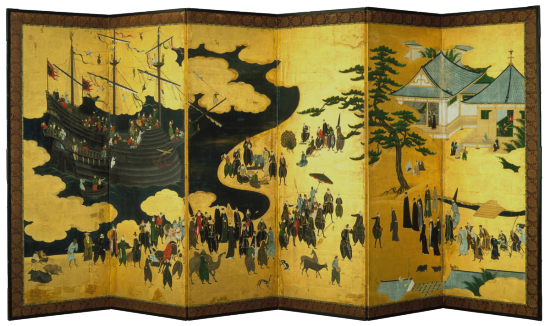
Among the works exhibited at the MNAA the Saint Vincent Panels by Nuno Gonçalves stand out - a masterpiece of European 15th century painting, which contains a total of sixty figures believed to be worshiping Saint Vincent. One of them is Infante Dom Henrique. Many other works are worth mentioning, such as the Belém Monstrance, by Gil Vicente, the Namban Folding Screens (pictured above), Saint Anthony's Temptations, by Bosch and Saint Jerome, by Dürer.
This museum was founded due to an old aspiration of the religious orders to give the works of art which were bought by the state a home. The MNAA was reformed in 1911, then acquiring the name it currently has. After visiting the museum, make sure you visit its garden, whose restaurant and terrace offer exceptional views over the Tagus and the port of Lisbon.
Address: Rua das Janelas Verdes, 1249-017 Lisboa
Phone: (+351) 210 732 319
Time: 10am - 6 pm (closed on Monday)
The Calouste Gulbenkian Museum opened in October 1969 as was the wish expressed in the will of Calouste Gulbenkian, the Armenian oil idustry businessman who settled in Portugal in the mid-twentieth century and gathered an incredible and extensive art collection.
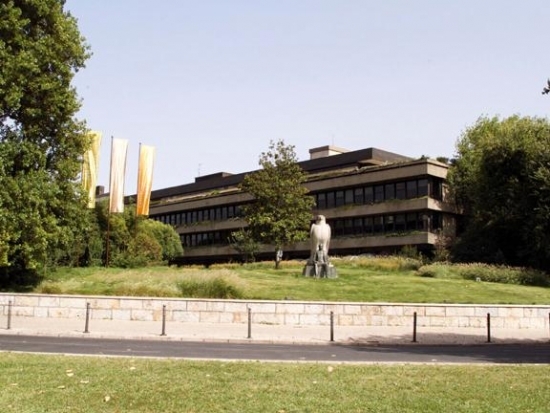
The permanent collection is divided in two circuits. The first is dedicated to oriental and classical art and features Egyptian art pieces, Greco-Roman and Islamic art as well as works from China and Japan. The other circuit is devoted to European art, with pieces that span from the 11th to the 20th century.
Among the 6,500 pieces acquired by Calouste Gulbenkian, there are works by Rembrandt, Renoir, Rubens, Monet, Degas and Van Dyck, among other artists, as well as textiles, tableware and a Lalique jewelry collection. Several of these works were purchased at the Hermitage Museum of St. Petersburg, including a famous sculpture of Diana.
The original idea of the Armenian founder was to create a museum in London, which did not happen because he had to move to Lisbon when the 2nd World War broke out. In 1953, the Armenian businessman stated in his will that he wanted to leave his works in the Portuguese capital and thus a foundation in his name was created, as well as the Calouste Gulbenkian Museum, which opened in 1969.
Currently the Fundação Calouste Gulbenkian is one of the most important institutions of Portugal and the museum is a must for anyone visiting Lisbon. This is part of an architectural complex consisting of the Foundation's head office building, the Modern Art Centre and an outdoor amphitheater in the famous gardens of the Gulbenkian Foundation.
Address: Avenida de Berna 45A, 1067-001 Lisboa
Phone: (+351) 217 823 000
Time: 10am - 6 pm (closed on Tuesdays)
The Berardo Collection Museum offers an overview of the art of the twentieth century and early twenty-first century, in particular European and American art. This is considered the most important collection of modern and contemporary art in Lisbon and even one of the best in Europe.
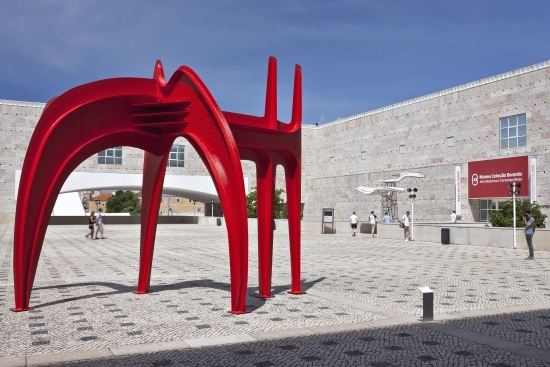
The collection displayed in this museum in the Centro Cultural de Belém, was put together by José Berardo, a Portuguese businessman and collector. In the permanent exhibition there are works by Andy Warhol, Pablo Picasso, Joan Miró, Salvador Dali, and Francis Bacon among many others. In addition to this, the Berardo Collection Museum also offers its visitors a very wide range of temporary exhibitions, which give you the opportunity of exploring other issues of modern and contemporary art.
This museum was 74th in the list of 100 most visited museums in the world in 2015, with 823 000 entries, according to "The Art Newspaper", an international art publication. This is the only Portuguese museum to have joined this list and, interestingly enough, one of the very few with free admission.
Address: Praça do Império, 1449-003 Lisbon
Phone: (+351) 21 361 2878
Time: Open every day, 10am - 7pm (last entry at 6:30pm)



